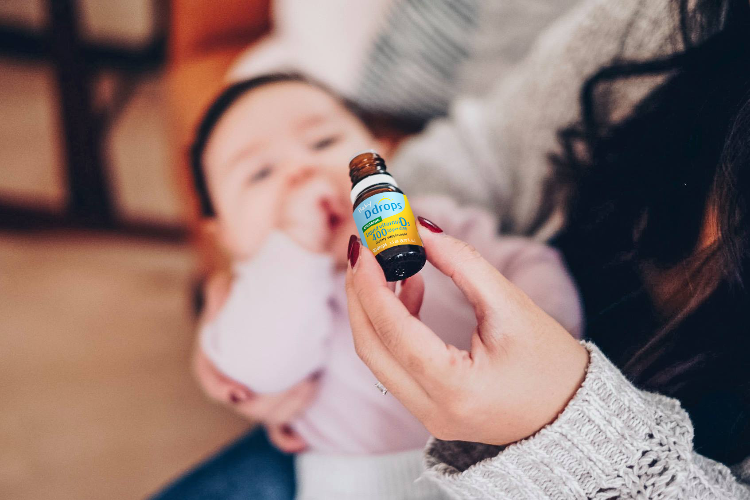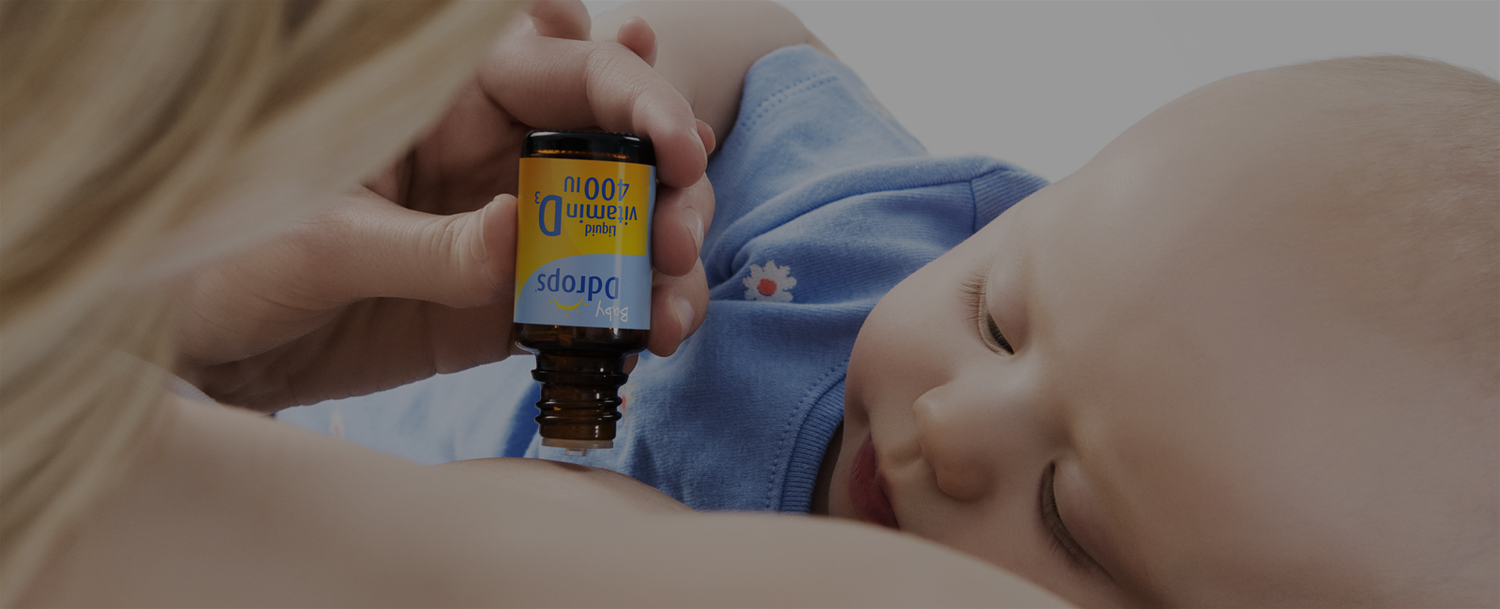26 Oktober 2017
Susu ibu diiktiraf sebagai sumber pemakanan yang ideal untuk bayi. Dengan lebih banyak kajian tentang susu ibu, pelbagai kajian menunjukkan bahawa susu ibu wanita moden masa kini biasanya kekurangan jumlah vitamin D yang diperlukan oleh bayi yang sedang membesar.[1,2] Ramai yang percaya bahawa ini bukan masalah khusus dengan susu ibu, tetapi lebih kepada gambaran cara kita hidup dalam dunia moden yang berindustri.
Mengetahui bahawa vitamin D adalah penting untuk pertumbuhan tulang bayi (kedua-duanya semasa dalam rahim dan selepas kelahiran), ibu bertanya kepada diri sendiri soalan berikut: Bagaimanakah mungkin susu ibu kekurangan vitamin D sahaja? Apakah yang boleh saya lakukan untuk memastikan bayi saya yang menyusu mendapat jumlah vitamin D yang sesuai?
Bagaimanakah mungkin susu ibu kekurangan vitamin D?
Semuanya bermula dengan pendedahan matahari langsung ibu, diet, dan simpanan vitamin Dnya. Ini akan menentukan berapa banyak vitamin D akan terkandung dalam susu ibunya. Inilah tangkapan - kebanyakan wanita dalam usia mengandung tidak mempunyai vitamin D yang mencukupi untuk keperluan tubuh mereka sendiri semasa mengandung dan penyusuan. Ini adalah masalah antarabangsa. Sebagai contoh, 45 peratus wanita Afrika Amerika mengalami kekurangan vitamin D.[3] Ramai orang tidak mendapat jumlah pendedahan kepada generasi seperti matahari di luar sebelum kita, oleh itu kita mendapat kurang vitamin D akibatnya. Oleh kerana ibu biasanya kekurangan vitamin D dalam badannya sendiri, hanya sebahagian kecil daripada apa yang diperlukan untuk bayi mendapat susu ibunya. Jumlah ini biasanya tidak hampir mencukupi untuk memenuhi keperluan bayi.
Untuk menjadikan perkara lebih rumit, jumlah kecil yang terdapat dalam susu ibu bukanlah prekursor vitamin D yang dikenali sebagai 25(OH)D, sebaliknya molekul vitamin D sebenar itu sendiri. Apa yang biasa berlaku dalam badan kita ialah prekursor 25(OH)D melalui transformasi dalam sistem darah kita dan menjadi molekul vitamin D yang bermanfaat. Ia mungkin terdengar seperti perkara yang baik untuk produk akhir vitamin D berada dalam susu ibu, tetapi sebenarnya, ia tidak sesuai kerana molekul vitamin D akhir mempunyai jangka hayat yang lebih pendek daripada pendahulunya, dengan separuh hayat 12-24 jam dan bukannya 2-3 minggu untuk prekursor.[4] Oleh itu, jumlah kecil molekul vitamin D yang dipindahkan ke dalam susu ibu tidak akan berada di sana untuk masa yang lama. Ini sangat mengurangkan peluang bayi yang disusui untuk mengambil vitamin D.
Apakah yang boleh dilakukan untuk memastikan bayi yang disusui mendapat jumlah vitamin D yang diperlukan?
Terdapat dua pilihan untuk dipertimbangkan.
Pertama, memandangkan kandungan vitamin D susu manusia berkaitan dengan status vitamin D ibu yang menyusu, ibu mungkin membuat keputusan untuk meningkatkan tahap vitamin D sendiri untuk memastikan ia mencukupi untuk dirinya dan bayi yang disusuinya. Ibu perlu mengambil 4,000 hingga 6,400 IU vitamin D setiap hari, setiap hari.[5] Untuk meletakkan ini dalam perspektif, vitamin pranatal biasanya mengandungi hanya 400 IU, yang jauh lebih rendah daripada jumlah ini.[6]
Pilihan terbaik dan paling selamat ialah memberi bayi suplemen harian vitamin D. Pihak berkuasa kesihatan di seluruh dunia, termasuk American Academy of Pediatrics, Health Canada, dan NHS di UK semuanya mengesyorkan bahawa bayi yang menyusu secara eksklusif, sihat, cukup bulan perlu menerima 400 IU vitamin D setiap hari.[7,8,9] Persatuan Pediatrik Kanada mengesyorkan bahawa bayi yang tinggal di komuniti Asli utara perlu mendapat 800 IU vitamin D setiap hari semasa musim sejuk.[10]
Ketahui tentang produk vitamin D cecair Ddrops® di sini .







ทิ้งข้อความไว้
เว็บไซต์นี้ได้รับการคุ้มครองโดย hCaptcha และมีการนำนโยบายความเป็นส่วนตัวของ hCaptcha และข้อกำหนดในการใช้บริการมาใช้